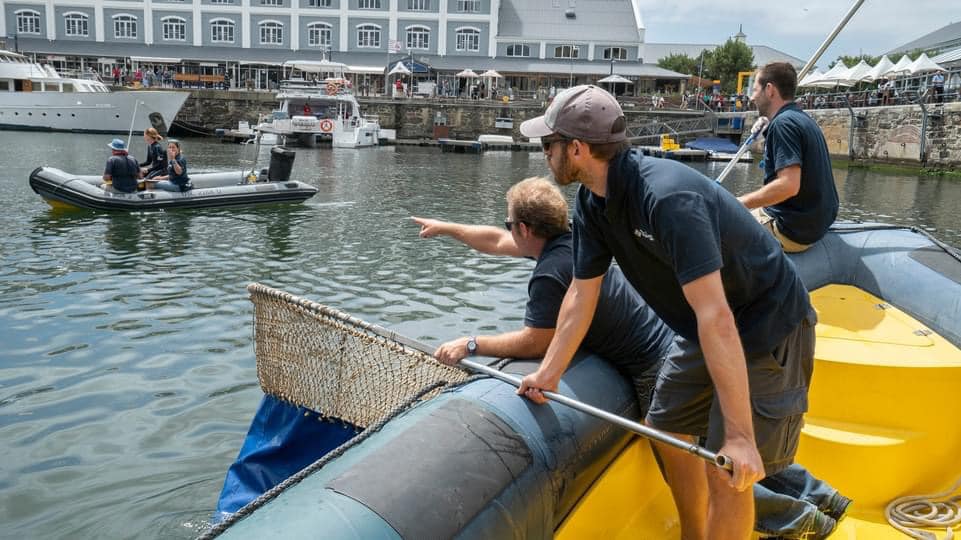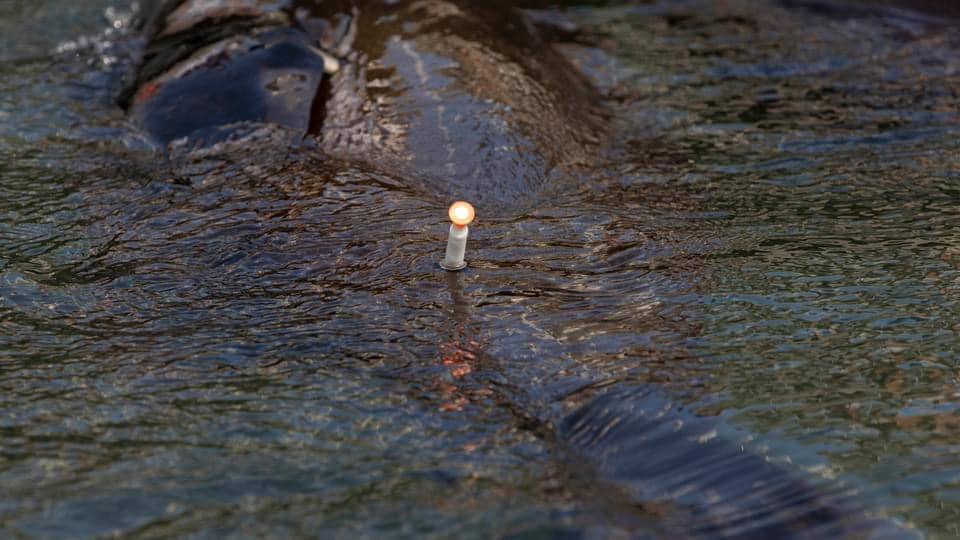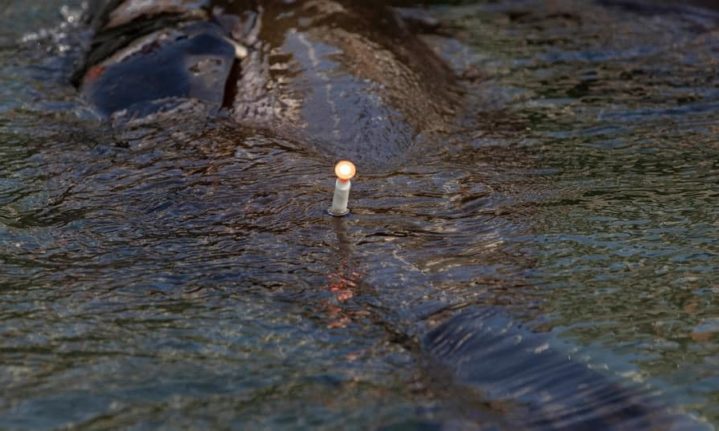Seals, like many other marine animals, can easily get entangled in debris, discarded fishing gear, plastic and other trash in the ocean. The Two Oceans Aquarium Foundation who work to rescue them, shared some information on the process of darting them when needed.

‘Some seals are just too difficult to access, or the entanglements are just too severe to easily cut off. For these special cases, a darting technique has been developed,’ the Foundation says.
‘Darting seals is not as easy as it might seem. Once darted, seals tend to jump into the water. This can result in them drowning. Working collaboratively with international experts, we have been able to refine the darting process according to Cape fur seal behaviour, metabolism and the areas where they are found.’
Experts from the Two Oceans Aquarium Education Foundation have worked closely with veterinarian Brett Gardner of Zoos Victoria in Australia, and the Department of Forestry, Fisheries and Environment to trial a protocol for the use of sedative darts and stimulants on high-risk Cape fur seals.
Their research was published in the paper Disentanglement of Cape fur seals (Arctocephalus pusillus pusillus) with reversible medetomidine-midazolam-butorphanol, in the Journal of the South African Veterinary Association.

The study was done on eight Cape fur seals in the Cape Town regions of the V&A Waterfront as well as Hout Bay Harbour. When an entangled seal was darted, two boats were kept in the area.
One boat would follow the seal to confirm that the dart hit, while another carrying the veterinary support team and scuba divers was on standby to release the seal from entanglement, and thereafter administer the reversal agent.
The sedative took around four minutes to work and the average time spent on a seal was 20 minutes. It took the seals around 27 minutes to fully wake up after being administered the reversal agent.

Of the eight seals that were part of the study, six were successfully disentangled, while one couldn’t be sufficiently sedated, but was able to fully recover without the reversal agent. The last seal hid from the boats after being darted and unfortunately couldn’t be found in time.
It was found dead days later, but an independent necropsy could not determine the cause of death. ‘Despite this unfortunate death, these initial findings do suggest that the use of MMB has a lower mortality rate than other drug combinations used in previous Cape fur seal studies, and it’s important to keep in mind that these seals would not be able to survive without an attempt to free them of their entanglements,’ the Two Oceans Aquarium added.
Watch this video for more information:
Pictures: Two Oceans Aquarium Foundation
Featured image: Teagan Cunniffe
ALSO READ
Cape fur seals mortality event may be linked to malnutrition




















